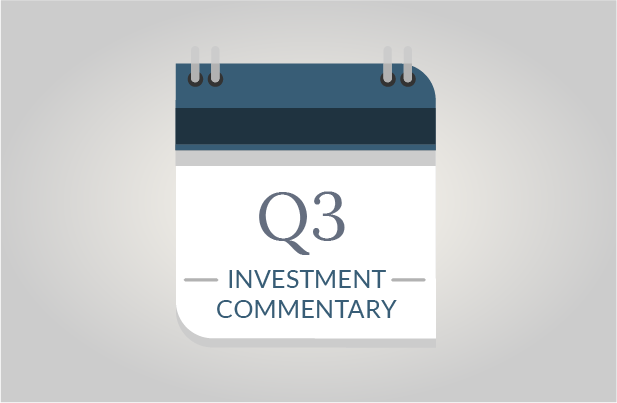As year-end approaches, it’s always a good time to ensure you’re positioned well financially to maximize financial benefits available to you. Many opportunities must be captured before year-end, while others should be revisited on an ongoing basis. We’ve compiled a list of top financial moves to make and questions to consider before the close of 2022.
1. Maximize Contributions to Retirement Plans
Maximizing your savings and minimizing your taxes are likely important goals. Review your retirement contributions to ensure that you have reached or will reach your goal or the limit for contributions. Don’t forget catch-up contributions if you are 50 or older by year-end. As a reminder, contributions to traditional 401(k), 403(b) and TSP accounts are as follows:
401(k), 403(b) and TSP Maximum Contribution Limits
| 2022 | 2023 | |
| Any Age Traditional Contribution | $20,500 | $22,500 |
| Additional Catch-Up Contributions (age 50+) | $ 6,500 | $ 7,500 |
2. Maximize Health Savings Accounts
If you have a high deductible health insurance plan, health savings accounts (HSA) offer a powerful tool. They allow you to reduce your current year taxable income and pay for current or future medical expenses with pre-tax dollars.
HSA Contribution Limits
| 2023 | 2024 | |
| Self-Only | $3,850 | $4,150 |
| Family | $7,750 | $8,300 |
| Additional Catch-Up Contributions (age 55+) | $1,000 | $1,000 |
3. Utilize and Plan for Your Flexible Savings Account
Flexible Savings Accounts (FSA) also create a tax-advantaged way for paying for medical and other expenses with pretax dollars. If you have a Flexible Spending Account (FSA) through an employer, make sure you are on track to spend your balance as contributions cannot be rolled over to the next benefit year, unless the plan allows an extension to March. Confirm the deadline for submitting receipts for reimbursement.
4. Contribute to Education Accounts
Contributions to 529 college savings plans offer tax-deferred savings benefits for your college funding objectives. Many states also offer state income tax deductions. If your state offers tax deduction benefits, remember to contribute before December 31. A few items to keep in mind:
a. You could increase your deductions by setting up separate accounts for each spouse funding for each child, depending upon state rules.
b. Parents and grandparents can create accounts.
c. You can always contribute more than the deduction limit relevant to your ultimate funding objectives.
5. Complete Charitable Gifts
Complete all of your intended charitable gifts before year-end, while being cognizant of the best method(s) relevant to tax planning. Here are three gifting practices that are tax-advantaged relative to traditional cash gifts.
Gifts of Appreciated Securities: Rather than gifting cash, you might wish to consider gifting shares of appreciated securities. Such gifts offer the same tax benefits (although subject to a deduction limit equal to 30% of your Adjusted Gross Income). They also allow you to avert future capital gains, which is an added tax benefit. Note: It’s advised to replenish your investments with cash to maintain your overall investment balances.
Bunching Gifts: Higher standard deductions make it important to review tax deduction benefits. Many taxpayers forfeit a portion or all of their charitable deduction potential now that standard deductions are higher. We frequently help clients to “bunch” contributions within Donor Advised Funds (DAF) when their itemized deductions excluding charitable giving fall below the standard deduction amounts. The DAF allows you to gain full charitable deduction benefits for your contributions in the current year while allowing you to distribute the amount to charities over multiple years. The current 2022 standard deductions are $12,950 for single individuals and $25,900 for married couples.
Example: If a married couple’s itemized deductions total $17,000 and they gift $10,000, their itemized deductions total $27,000, only gaining a tax deduction benefit of $1,100 above the standard deduction amount of $25,900. Over three years, this equates to deductions of $81,000. However, if the couple bunches three years ($30,000) of giving into a DAF, they can deduct $47,000 in the current year, and take the standard deduction of $25,900 in the following two years. Over three years, this equates to deductions of $98,800.
Qualified Charitable Distributions: If you are 70 ½ or older, you might gain the greatest tax benefit by making charitable distributions directly from your IRA account. These are known as Qualified Charitable Distributions (QCDs). For individuals subject to Required Minimum Distributions (RMDs), QCDs reduce your taxable income by every dollar you contribute.
6. Review Your Capital Gains and Losses
Capital gains and losses from the sale of investment assets are part of your taxable income. If you have net realized capital gains, it’s important to identify any assets with unrealized capital losses that could be sold to mitigate your tax liability. SageVest actively reviews portfolio tax exposure on an ongoing basis, focusing on maximizing returns on an after-tax basis.
7. Take Your Required Minimum Distributions (RMDs)
If you are age 72 or older, or you are the owner of an inherited IRA, don’t forget to take your Required Minimum Distribution (RMD) before December 31st. Failure to take your RMD can result in a high tax penalty.
8. Verify Your Tax Bracket
Based on your income for the year, will you be in a higher or lower tax bracket? This can help determine tax decisions such as receiving more income through selling profitable investments or lowering taxable income by selling unprofitable investments. It also may allow you to take certain tax deductions available at lower brackets or show you what deductions you may lose at higher brackets. It is important to ask your advisor to project your taxes due especially if circumstances are different this year, such as a job change, relocation, high medical expenses, divorce, marriage or the welcoming of a new child.
9. Consider a Roth IRA Conversion
Roth IRA accounts are powerful savings vehicles given their extremely favorable tax treatment. Evaluating a Roth IRA conversion is a worthy exercise if you are in a low income tax bracket this year.
10. Evaluate Estimated Tax Payment Needs
If your income has increased relative to the prior year, it is important to evaluate the need to make estimated tax payments to avoid penalties and interest. Conversely, if your income has declined from last year and you are making estimated tax payments, you might be able to forego year-end payments.
11. Give to Family
If your wealth exceeds your lifetime needs, consider making family gifts, as appropriate and relevant to your values. The 2022 maximum annual exclusion gift amount is $16,000, allowing you to make tax-free gifts to family members. This amount is per person; therefore, each spouse can gift $32,000 to one person.
12. Ensure Your Planning Is Up to Date
While tax planning is important, so too is ensuring you are on the right track to securing your future financial objectives. Frequent (ideally annual) reviews of your long-term retirement plans and other financial planning exercises are always recommended to ensure you are informed and making smart decisions.
13. Confirm You Are Comfortable With Your Investment Allocation
Your investment portfolio requires ongoing consideration regarding appropriate allocations. These should align with your long-term objectives and risk tolerance. Frequent reviews with your financial advisor are always recommended.
SageVest understands that your finances are not static. They change year-by-year. This is why we actively review all aspects outlined above and others on your behalf as part of our proactive wealth management approach. Please contact us to discuss any updates to your finances or your broader financial goals in greater detail.




